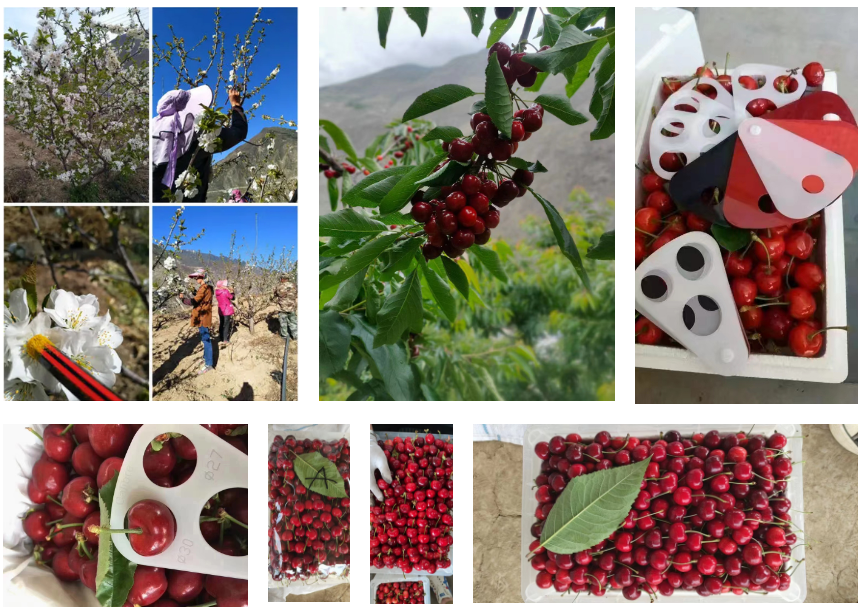Aug . 05, 2024 18:32 Back to list
Enhancing Fruit Set Rates through the Application of Plum Pollen in Agricultural Practices
Using Plum Pollen to Improve Fruit Setting Rates
The cultivation of fruit-bearing trees is a delicate balance of various ecological and agricultural practices aimed at maximizing yield while maintaining the health of the plants. One innovative method that has garnered attention among horticulturists and orchardists is the use of plum pollen to enhance the fruit setting rate in various fruit trees. This technique not only boosts productivity but also contributes to the biodiversity and ecological stability of agricultural systems.
Fruit setting, or the successful development of fruit after flowering, is essential for the profitability of fruit cultivation. Factors such as pollen viability, pollination mechanics, and environmental conditions can significantly impact the fruit set. Recent research suggests that the introduction of plum pollen in cross-pollination strategies can lead to improved outcomes in fruit set percentage. But how exactly does this work?
Firstly, plum pollen is rich in genetic diversity, which is crucial for effective pollination. When pollinators such as bees transfer pollen from plum trees to other fruit trees, it increases the likelihood of successful fertilization. This is particularly beneficial for species that may suffer from self-incompatibility where a tree cannot fertilize its own flowers. By using plum pollen as a compatible alternative, orchardists can enhance cross-pollination success, leading to a higher yield of fruit.
Secondly, the timing of pollen application plays a critical role in the effectiveness of this strategy. For the best results, professionals emphasize the need to synchronize the flowering periods of plum trees with those of other fruit-bearing trees. When pollen is readily available during peak flowering times, the chances of successful pollination increase, directly influencing the overall fruit set rate. Moreover, utilizing plum pollen can encourage pollinators to visit more flowers, thus improving the pollination rates of nearby fruit plants.
using plum pollen can improve the fruit setting rate quotes

In practical terms, the application of plum pollen can be achieved through several methods. One common approach is to collect pollen from mature plum trees during their bloom and store it under controlled conditions to maintain viability. This stored pollen can then be used as a supplement during the flowering season of other fruit trees. Alternatively, integrating plum trees within orchards increases the likelihood of natural pollen transfer, thereby enhancing the chances of successful pollination across different species.
The benefits of using plum pollen extend beyond fruit yield. This practice also promotes ecological benefits. Increased biodiversity in orchards supports a wider range of pollinators, which is vital for maintaining healthy ecosystems. In the face of declining bee populations, enhancing pollination strategies through complementary crops like plums can help mitigate some of the challenges faced by fruit growers.
However, it is essential to note that while plum pollen can significantly improve fruit set rates, its effectiveness can vary based on environmental conditions, tree health, and specific fruit varieties. Orchardists are encouraged to conduct trials and adapt techniques to their local conditions to maximize the advantages of this method.
In conclusion, the utilization of plum pollen to improve fruit setting rates presents a promising avenue for fruit growers seeking to enhance yield and sustainability. By understanding the mechanics of pollination and implementing innovative practices, horticulturists can contribute to a more productive and ecologically sound agricultural landscape. As global challenges such as climate change and biodiversity loss intensify, such strategies will be indispensable in ensuring the prosperity of fruit cultivation and the health of our ecosystems.
-
Pollen Peach Tree for Pure Pollination and High-Quality Peach Pollen
NewsJul.30,2025
-
Premium Cherry Pollen for Pure Pollination & Different Types
NewsJul.30,2025
-
Artificial Pollination Solutions for Various Plant Pollen Types
NewsJul.29,2025
-
Artificial Pollination Solutions for All Plant Pollen Types
NewsJul.29,2025
-
Premium Plant Pollen for Pure Pollination & Pollen Block Solutions
NewsJul.29,2025
-
Artificial Pollination Solutions for Efficient Crop Yields
NewsJul.28,2025